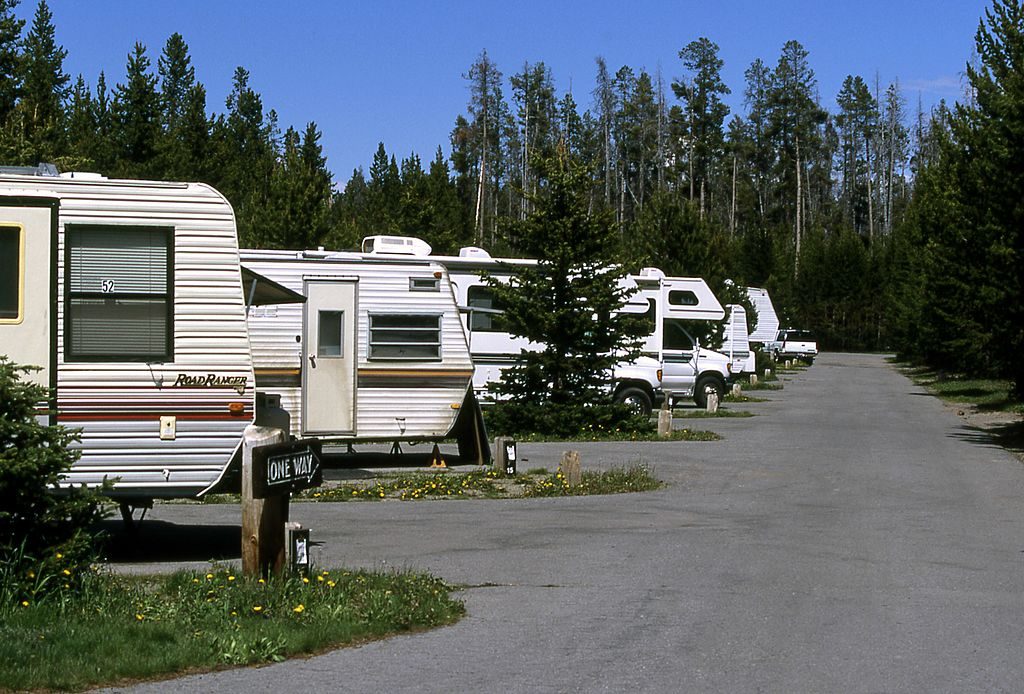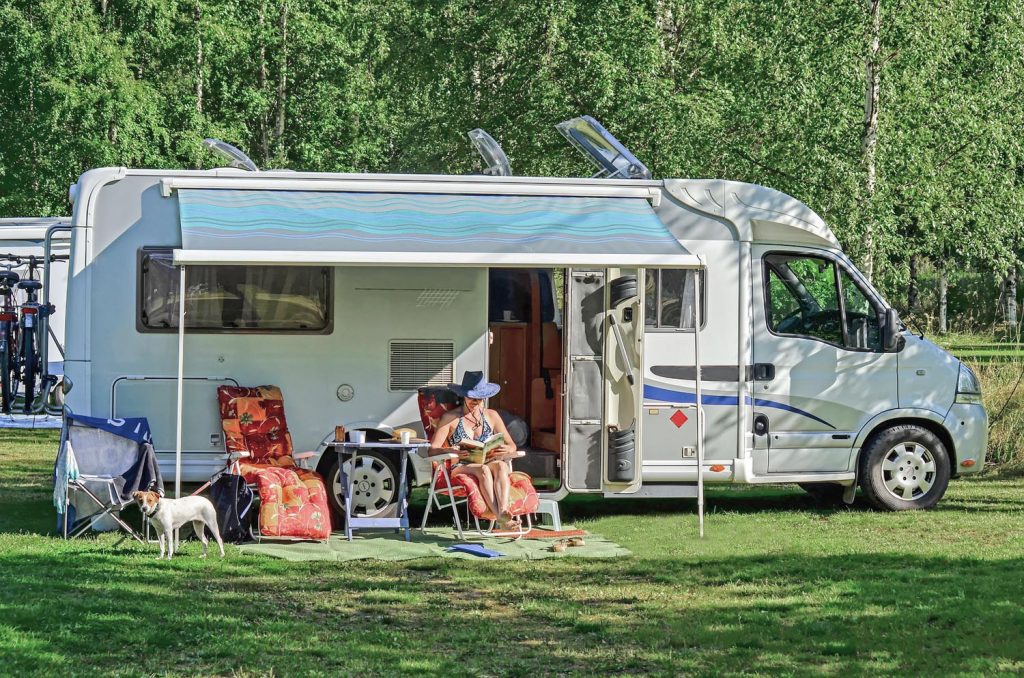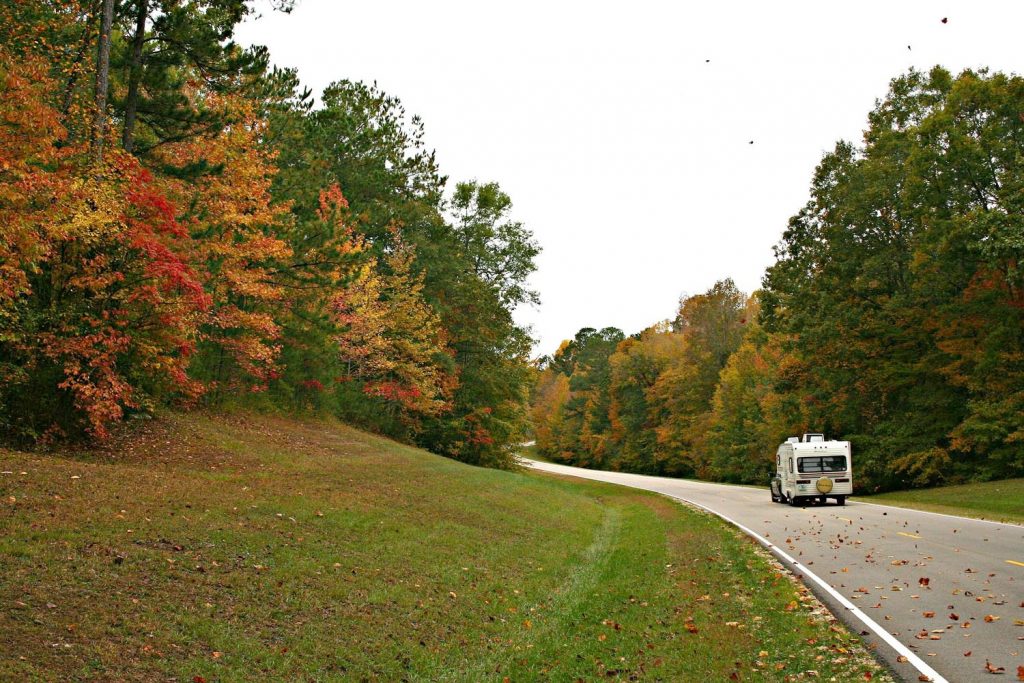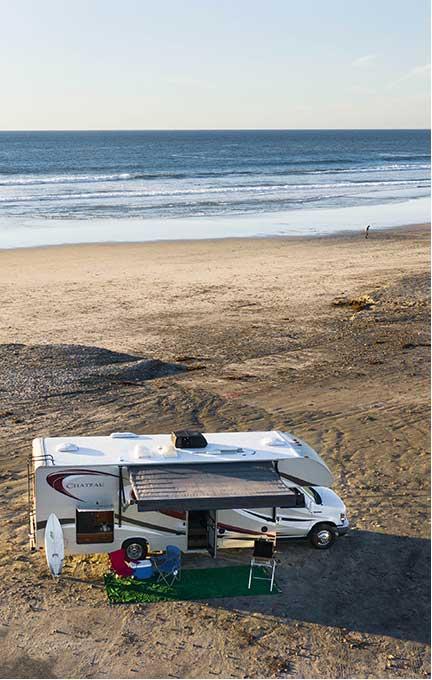As a new RVer, there are so many things to learn about your travel trailer or motorhome. It can be overwhelming at first. That’s why Outdoorsy has created a new series entitled “One Big Question,” where we tackle one new action, walking you through what sometimes seems to be a daunting task. Today’s question is:
How can I set up camp for the 1st time?
You’ve finally gotten your hands on an RV and have made yourself familiar with the electrical and water systems set-up and the tanks. But you are still a little leery about setting out on your first camping trip. Why don’t we give you a checklist of sorts for setting up your first simple campsite? We are going to assume you will be staying at a campground with full hook-ups for this example.

What To Bring
Aside from your RV, here are a few essential items you will want to bring with you to the campground:
- Freshwater hose
- Garden hose for sewer cleanout
- Sewer hose
- Power cord for electric (if it is not attached to your rig)
- Small hand level
- Leveling blocks
- Unessentials that add comfort like lawn chairs and grill
Campground Arrival
When you arrive at the campground, check-in and receive your campsite spot. These can be comprised of both back-in sites and pull-thru sites so be sure to find out which type you have. When you arrive at your designated campsite, check to see where the electrical, water and sewer hook-ups are located and make sure there is nothing blocking the pad where you will park, including branches you might swipe with the top or sides of your rig. Back in or drive-thru (depending on the site) and align your electrical hookups with the box at the campsite. Be sure to take your time getting situated on the site – it is not a race ?.
- Before unhitching, check to see if your RV is level. If not and it can be remedied by backing up or moving forward a bit, do so. If not, assume you will be work with your automatic leveling system (many newer and bigger RVs come equipped with these) or using leveling blocks.
- Move onto leveling blocks until the rig is level forward to back and side to side.
- Attach the electrical cord to box, then turn on the circuit breaker at the box.
- Attach fresh water hose to the spigot on one end and freshwater intake valve on your rig. Turn on the spigot.
- Attach sewer hose with a clear elbow onto your rig’s plumbing but leave gate valves closed. Put the other end of sewer hose in the sewer dump hole. (For a refresher, see “How to Dump the Black Water Tank.”) Leave both gray and black tank gate valves closed for the duration of your stay until you are ready to dump the tanks. In other words, do not leave them open all the time – there won’t be enough liquid in the black tank to carry solids out unless you let liquids and solids all leave the tank at one time.
- Set up lawn chairs and outdoor seating.
- If you have items you have stored away for travel, now is the time to get them out and set them up. For instance, I bungy my television against the wall and put my computer monitor on the bed.
- If you have curtains to make your space private from the outside, pull them.
Congratulations! You are ready to kick back and enjoy your first night camping!

Depending on the weather, you may have a couple of considerations to think about:
- If the evening temperature dips close to 32 degrees, unhook your water hose at both ends and just use your water pump and the water from your fresh water tank overnight, then turn off water pump when not using.
- If the temperature is uncomfortably cold or hot inside, turn on your RV heater or air conditioner, as you are hooked up to electric and they will run without the aid of a generator. Do keep in mind if you have two air conditioners and are hooked up at a 30 amp site, you can only run one at a time.
Packing Up Camp
You’ve enjoyed a great getaway, but the time has come to pack up camp and head for home. Here’s a checklist to get you out of the campground safely and with everything intact:
- If you have raised a TV antenna or satellite while camping, lower them.
- Take down any temporarily mounted cell phone boosters and store them.
- Check that all windows are closed and secured.
- Close all vents.
- Turn off or unplug any electric items.
- Store all items that would fly around the cabin if left to their own devices ?.
- Secure all electronics like TVs and computers.
- Store all outdoor items like lawn chairs and grills.
- Retract awning and secure it.
- Open curtains.
- Make sure cabinets and drawers are closed and secured.
- Turn off water spigot, then detach the end of the freshwater hose from the spigot. As it drains, detach other end of the hose from your RV and drain hose before storing it.
- Turn off breaker at electric box, then unplug and store your electric cord in rig.
- Attach a garden hose to a spigot. Dump your black water tank, then gray water tank, cleaning sewer hose with the garden hose (not fresh water hose!). Store sewer hose and garden hose away from the fresh water hose.
- Retract hydraulic levelers or drive off level blocks and store them.
- Walk the exterior of your RV looking for open windows, debris that you could run over as you pull out of the campsite, and any items left outside.
- If you have a motorhome, turn off automatic steps or store fold-out ones. If you are pulling a trailer or 5th wheel, hitch your vehicle to it.
- Hit the road!

You will find that the more you camp, the more these check-off items become a habit. You’ll also find that you will want to make RVing a more frequent activity in your life!








